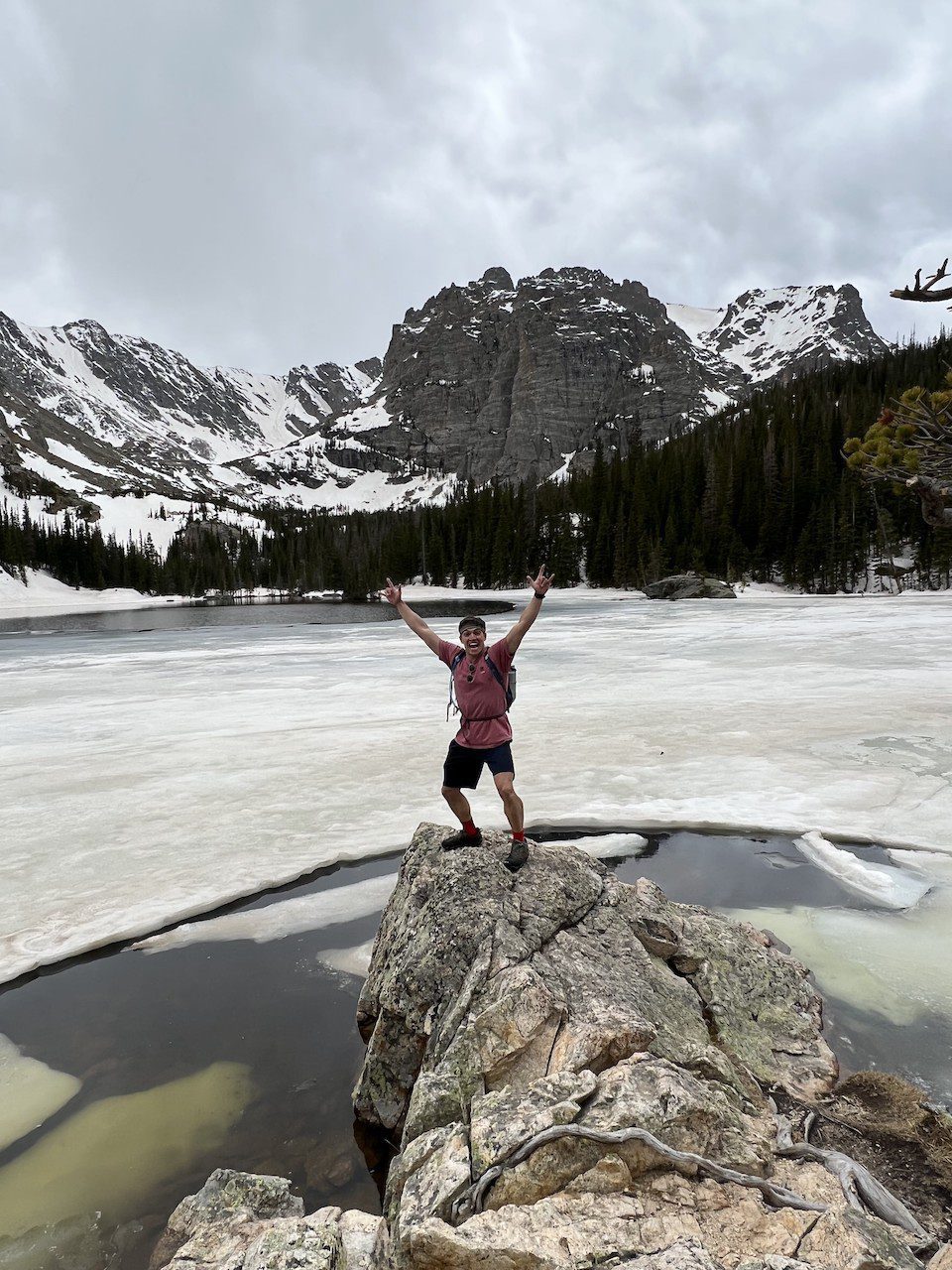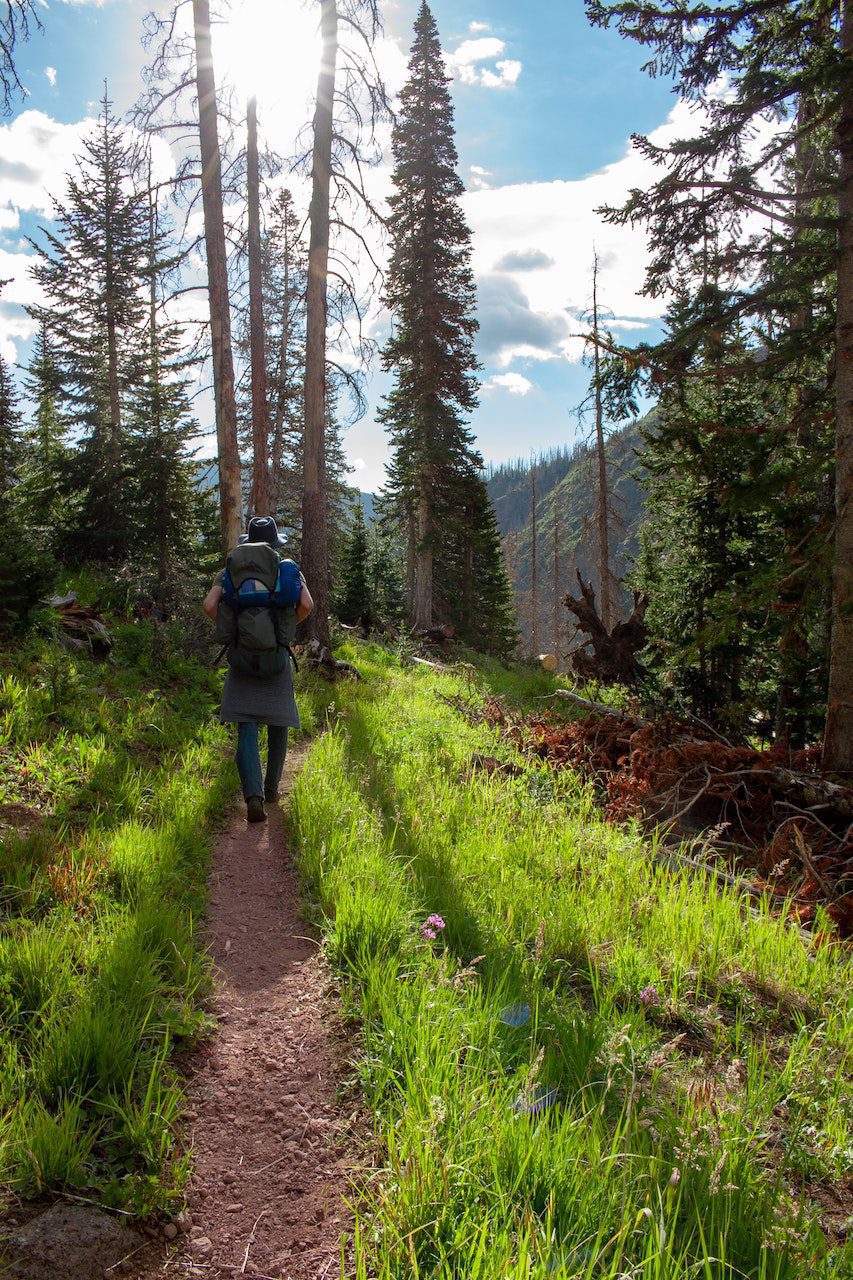
How Many Clothes To Bring Backpacking? (2022)
Having the right backpacking gear is essential, and your clothing is some of the most crucial gear you are bringing with you as you want them to be well-insulated, comfortable, and lightweight. A common question many beginners have is how many clothes to bring backpacking?
As with most questions about backpacking gear selection, what you bring depends heavily on the weather and environment you will be hiking in and how lightweight you want to be. The range for how many clothes to bring backpacking can run anywhere from eight to eighteen different articles of clothing.
At the bare minimum, you will need one of each article of clothing plus your sleep clothes. It may sound gross, but it is the least amount you can get away with while still being comfortable. Keep in mind there is no rule or exact science. A lot of packing depends on your personal preferences and the type of backpacking trip you are going on. I had a 4-7 day backpacking trip in mind when writing this article.
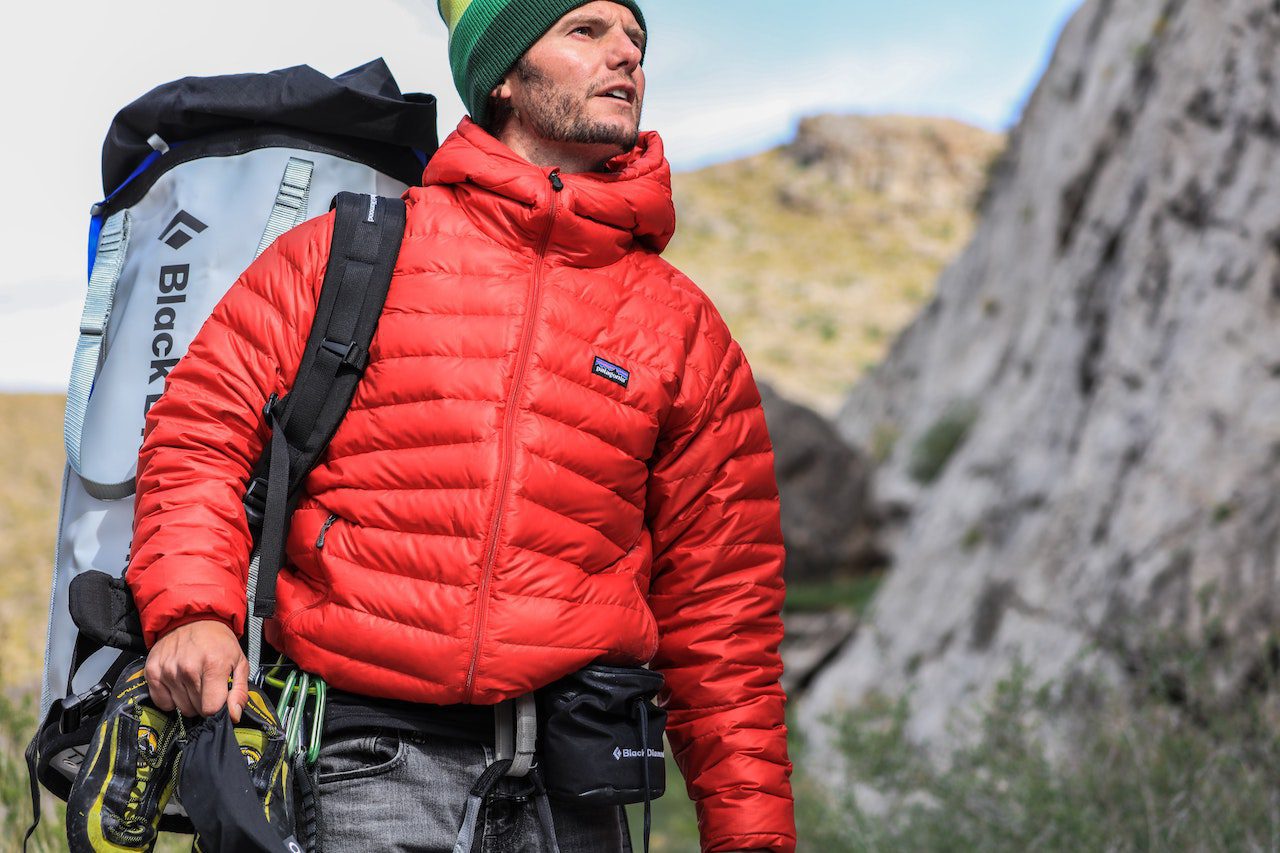
What Clothes Are Essential For Backpacking?
So as I mentioned, at a minimum you need one of each article of clothing when backpacking. But you may be asking what the essential clothes are for backpacking? Well, here they are!
- Base Layer / Hiking Shirt
- Mid-Layer / Down Jacket / Fleece Jacket
- Outer Layer / Rain Jacket
- Hiking Pants / Shorts
- Hiking Socks
- Underwear
- Sleep Clothes (for the skinny check out my article “What Clothes To Sleep In When Backpacking”)
Base Layer / Hiking Shirt
You can go with anything from an athletic T-Shirt/long sleeves or a traditional hiking shirt button-down. In terms of material, 100% polyester or merino wool would work. As always, avoid buying any hiking clothes made of cotton. I do not recommend backpacking shirtless unless you want some gnarly blisters from your pack.
Mid-layer / Down Jacket / Fleece Jacket:
Next up is your mid-layer. This layer is for warmth and insulation. The popular options when it comes to mid-layers are down and fleece jackets.
I typically use a down jacket as a mid-layer. Although they are usually more expensive, down jackets offer better insulation and packability, most of which can fold into their pocket. Your mid-layer is likely one of the most expensive parts of your backpacking wardrobe, but it is essential to keeping you warm and safe in the backcountry and is not something you want to go cheap on.
Outer Layer / Rain Jacket
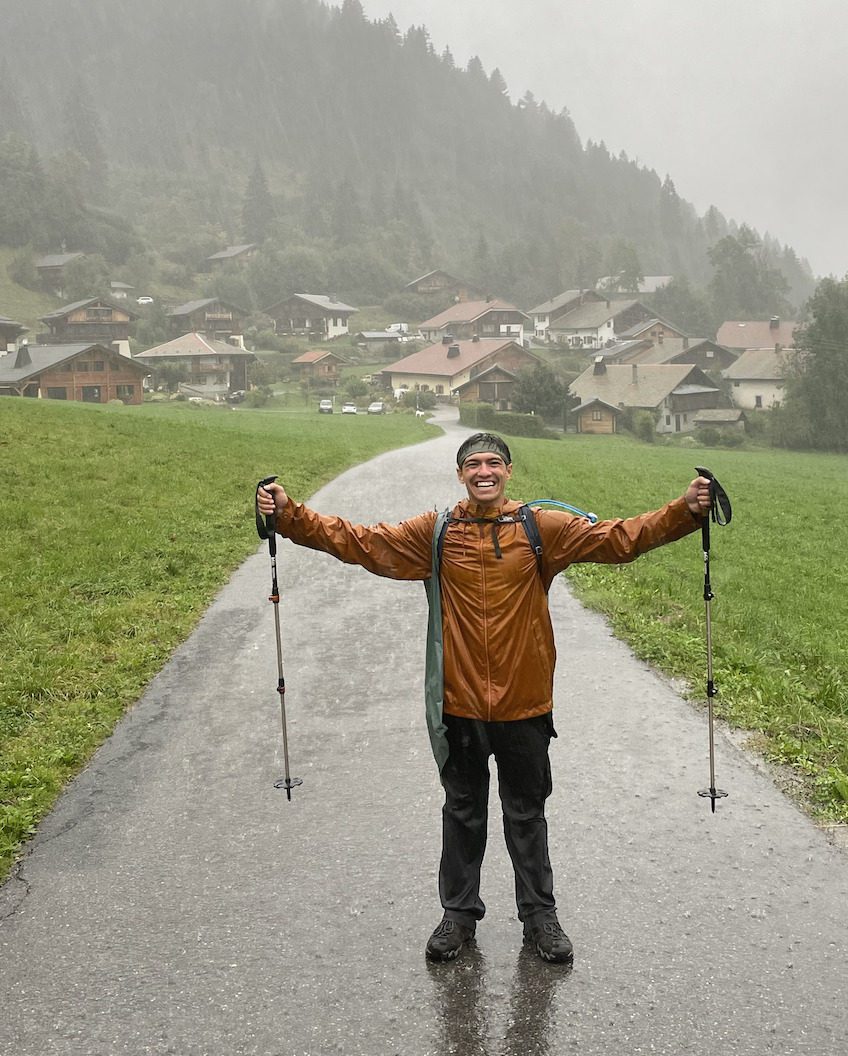
Always pack a rain jacket—every time. Your rain layer is essential for keeping you dry and protecting yourself from the wind, rain (duh), or snow. Also, don’t forget to bring a rain cover for your pack. Having a rain layer won’t do you much good if you are stuck with a soaking wet pack after a day of hiking in the rain!
Hiking Pants / Shorts:
You can wear hiking pants or shorts for your lower body. I typically make this decision based on the weather and the area I will be hiking in. If I am backpacking in warmer desert-like regions, I will opt for shorts to keep me cool and comfortable while hiking. Alternatively, if in the woodlands, I will wear hiking pants to keep me warm and protect against tick bites.
Hiking Socks:
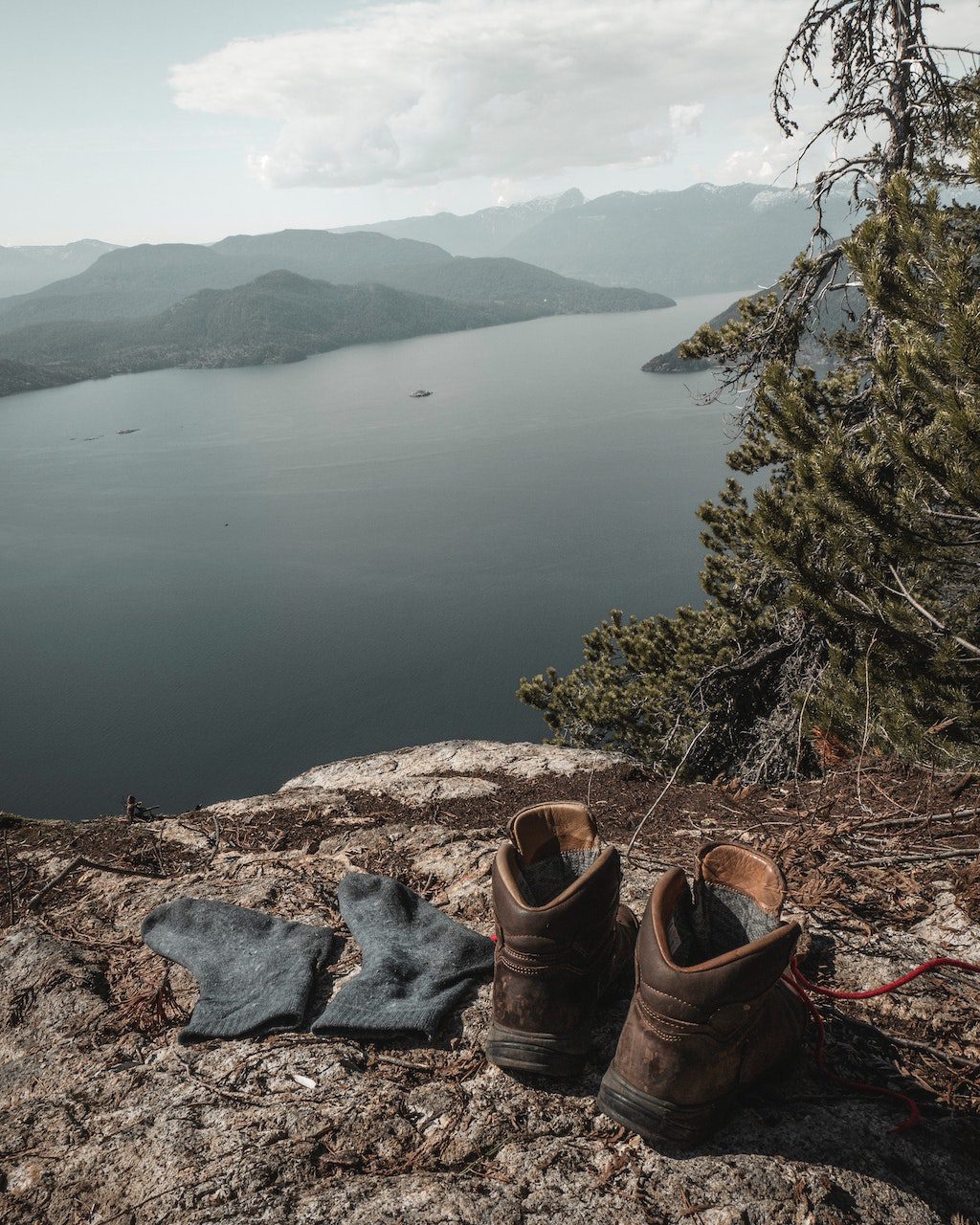
These are necessary. Pay the extra money and get a nice pair of wool hiking socks. A good pair of hiking socks will protect you from blisters and the cold and are moisture-wicking, all essential to have when in the backcountry.
Underwear:
It’s UNDIE TIME!!! Many may wonder how many pairs of underwear you should bring on a backpacking trip? Believe it or not, this is a matter of preference. Some people bring 2-3 changes of underwear. Other people will bring shorts with a liner and won’t wear any at all.
Sleep Clothes:
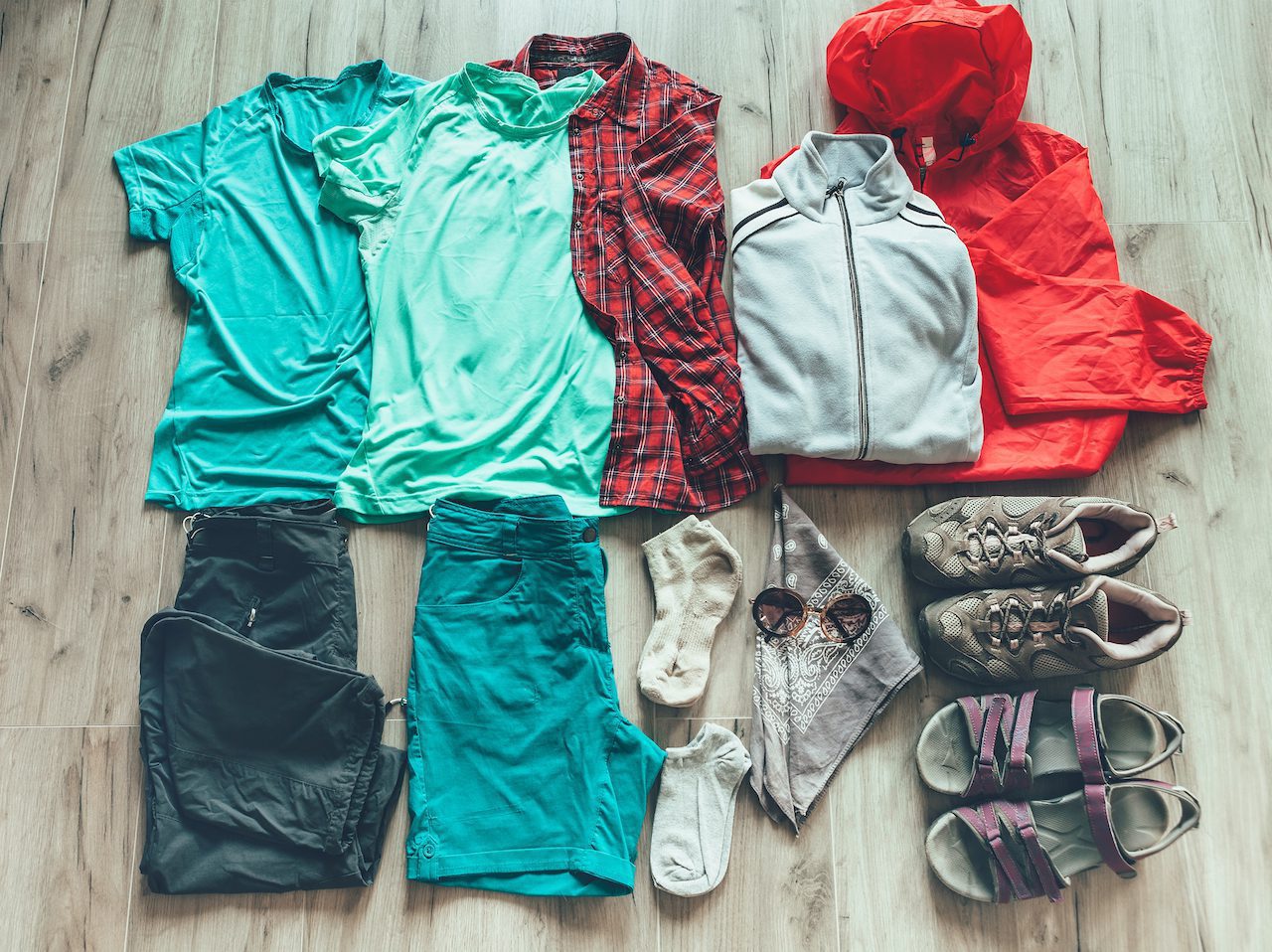
For your sleep clothes, I recommend having a separate clean set of garments to change into, such as the following:
- Thermal pants +/- fresh shirt
- Thermal shorts +/- fresh shorts
- Additional pair of hiking socks
- Hat (depending on weather)
- Gloves (depending on weather)
As with many aspects of backpacking, what you bring for sleeping will depend on the environment and weather you encounter. To learn more about sleep clothes, you should check out my article “What Clothes Should You Wear To Sleep When Backpacking?”
Sample Packing Lists
Here are two sample packing lists that show how little and how many clothes you can bring for a backpacking trip.
Packing Light
- Socks 2
- Shirt 1
- Hiking pants 1
- Down jacket 1
- Rain jacket 1
- Sleep pants 1
- Sleep shirt 1
Packing Heavier
- Socks 3
- Shirt 2
- Shorts 1
- Pants 1
- Down jacket 1
- Rain jacket 1
- Sleep pants 1
- Sleep shirt 1
- Hat 2 (beanie for sleeping & cap for hiking)
- Gloves 1
- Underwear 3
- Rainpants 1
Other Frequently Asked Questions About Backpacking Clothes:
Below are some other commonly asked questions regarding backpacking clothes!
How To Clean Clothes When Backpacking?
I typically just go with dunking them in a local water source and rinsing them off that way. If you want an extensive cleaning job, I would say you should take your clothes at least 100ft away from any water source and give them a good scrub with soap and water. Afterward, you can just hang them out to dry.
Are Cotton Clothes Good For Backpacking?
No.
As a general rule of thumb, you want to avoid cotton clothes whenever backpacking. This is because cotton will retain water and takes longer to dry. When hiking, as you sweat, cotton clothes will keep the moisture. This results in decreased insulation which can be particularly dangerous in colder weather and has to potential to lead to hypothermia.
Other reasons to avoid cotton clothing are its increased weight and drying time compared to other options.
Do I Need Rain Pants When Backpacking?
Another hotly debated gear topic is whether you need rain pants when backpacking. While there is no hard or fast rule to this, rain pants are not a necessity for all backpacking trips.
Rain pants are worth it if you are taking a backpacking trip where you know you will encounter heavy rain or snow. But it is not something that I would say is a necessity for all backpacking trips. As always, check the weather and prepare accordingly.
I Hope This Helps! What Do You Pack For A Backpacking Trip?
Disclosure: Some links on this page are affiliate links, and if you go through them to make a purchase or a booking, I may earn a commission. Using these links DO NOT affect the cost of the product/booking. The price remains the same affiliate link or not.

